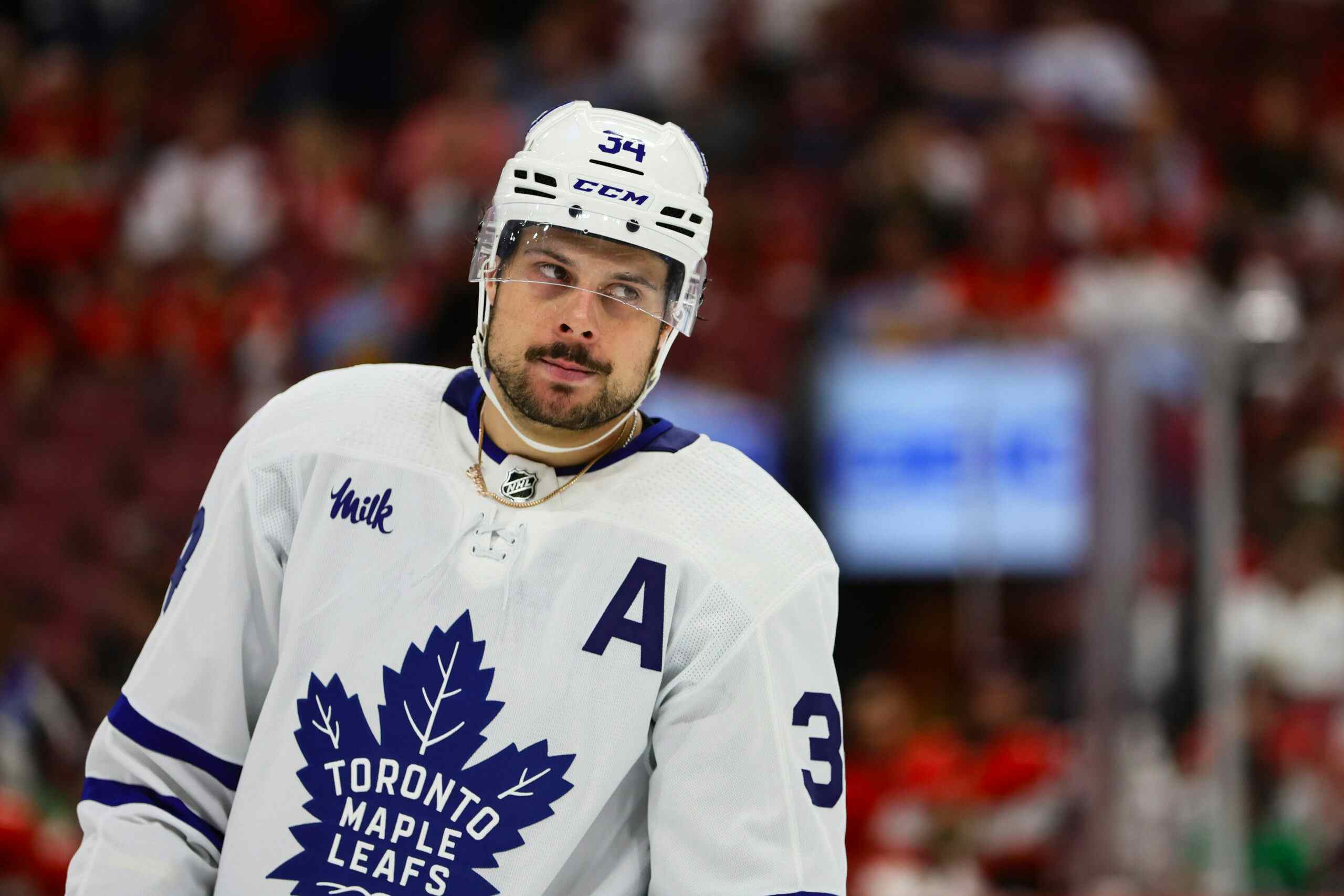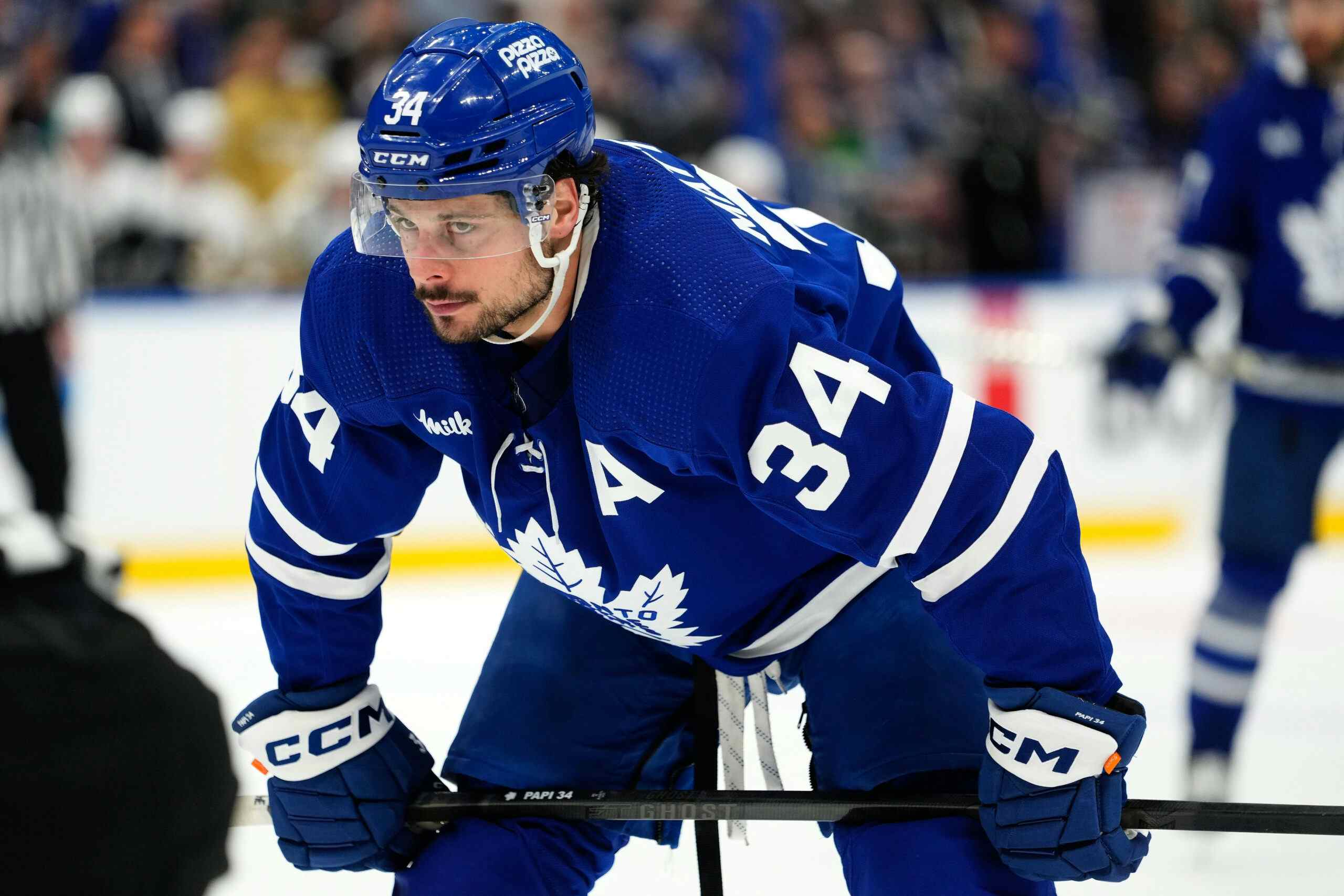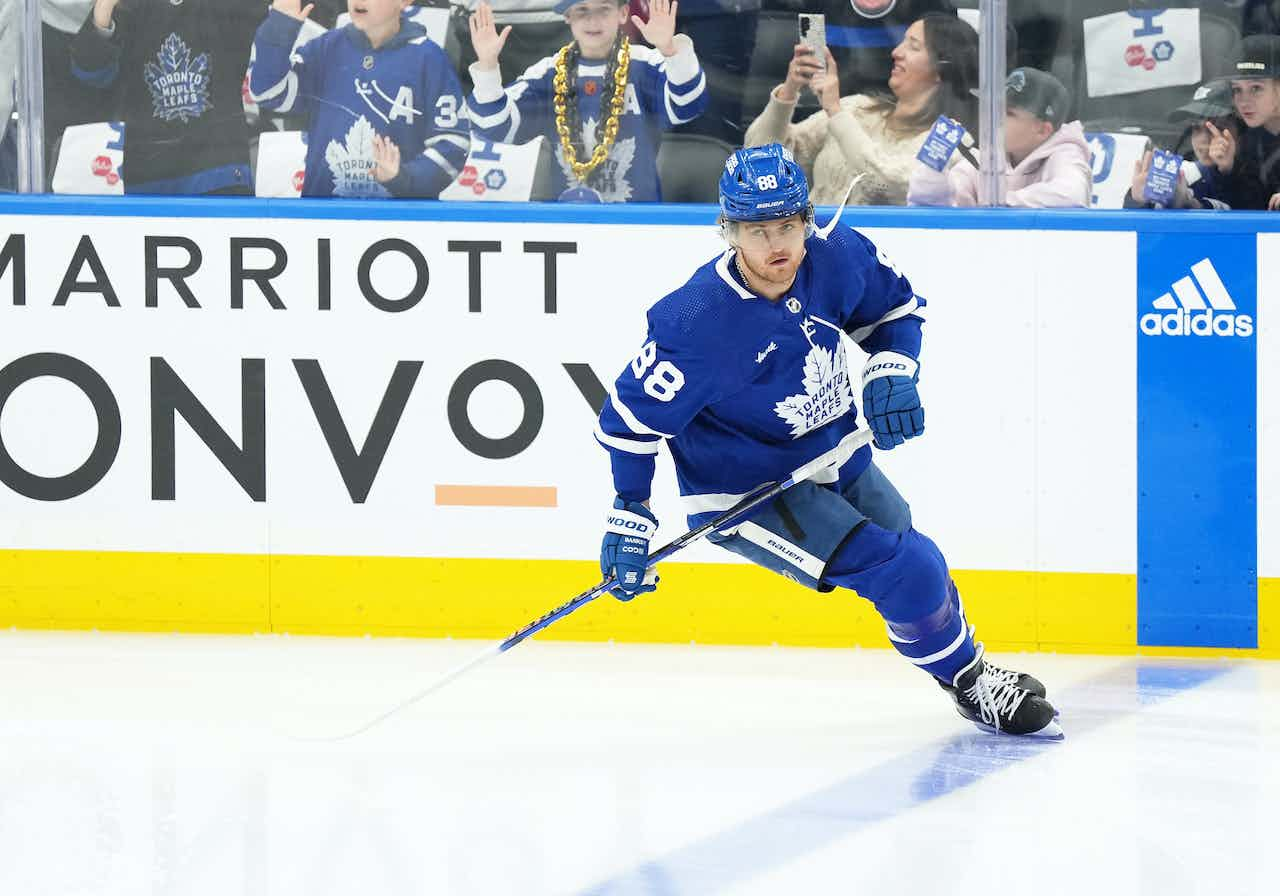pGPS Numbers For The 2016 Leafs Draft Class
By Shawn Reis
7 years agoWith free agency just a few hours away and the 2016 draft being almost a week old, it seems like its now or never to take one last look back at how the Leafs fared, particularly in rounds two through seven. This article will look specifically at the numbers behind what the Leafs did using pGPS, the best current prospect projection tool hockey has to offer.
You can read about pGPS here.
THE NITTY GRITTY
Below you’ll find the Leafs’ 2016 draft class sorted by pGPS %.
Note that Auston Matthews and Nikolai Chebykin have been excluded because they scored no successful comparables using the tool. In the case of Matthews this is because he was so good that he broke the tool, in the case of Chebykin it’s that he plays in the MHL which we only have numbers for dating back to 2011 (so, not a long enough time or a large enough sample size to gauge prospect success).
Joseph Woll has also been excluded because the tool doesn’t currently project goalies.

As we can see, Adam Brooks and Carl Grundstrom look like particularly good statistical gambles. That’s not surprising given Brooks had 120 points in the WHL this year and Grundstrom plays in the SHL as a teenager.
On the other end you have Korshkov and Greenway, selected in the second and third rounds respectively. While Korshkov in particular seems like perhaps the safest bet past Matthews to reach the NHL from a purely qualitative perspective, his numbers don’t look good.
So great, those are the numbers, they’re a little polarizing…but what’s the context?
COMPARED TO HISTORY
Using historic rates for success by position and round, here’s how the 2016 draft class pans out:

For further reference, here’s the same thing only for the Leafs’ 2015 draft class using our old friend PCS:

As we can see, in 75% of observed cases the Leafs drafted players who’s projection value exceeds historical draft pick value. That’s pretty good.
And it’s not like there aren’t players with low projection tool numbers, either. For example, 76 draft-eligible CHLers ranked by Central Scouting fit the bill of having a PCS% of 10.0 or lower last season. That’s a lot, especially if you consider that, again, that’s only including CHLers, and only those ranked by Central Scouting.
FURTHER pGPS CONTEXT
Let’s give ourselves even more context. Let’s also look more closely at pGPS R, a number that combines not only probability of reaching the NHL, but the potential a player might hold one they reach it.
Here are a number of highly-touted players for this year’s draft class, with the entire Leafs’ draft class included:
Rank | Player | Pos | pGPS % | pGPS P/GP | pGPS R |
1. | Matthew Tkachuk | LW | 100 | 0.7212 | 72.12 |
2. | Logan Brown | C | 80.0 | 0.5801 | 46.41 |
3. | Kieffer Bellows | LW | 50.0 | 0.8180 | 40.90 |
4. | Alex DeBrincat | RW | 50.0 | 0.8034 | 40.17 |
5. | Alex Nylander | W/C | 67.5 | 0.5546 | 37.44 |
6. | Pierre-Luc Dubois | W/C | 100 | 0.3633 | 36.33 |
7. | Jakob Chychrun | LD | 81.3 | 0.4230 | 34.37 |
8. | Olli Juolevi | LD | 83.3 | 0.4014 | 33.45 |
9. | Taylor Raddysh | RW | 58.6 | 0.5701 | 33.42 |
10. | Mikhail Sergachyov | LD | 72.7 | 0.4517 | 32.85 |
11. | Vitali Abramov | RW | 50.0 | 0.6231 | 31.16 |
12. | Adam Mascherin | RW | 43.5 | 0.7054 | 30.67 |
13. | Jake Bean | LD | 75.0 | 0.3944 | 29.58 |
14. | Michael McLeod | C | 46.8 | 0.5892 | 27.58 |
15. | Cameron Morrison | LW | 50.0 | 0.5229 | 26.14 |
16. | Pascal Laberge | RW | 42.3 | 0.5779 | 24.45 |
17. | Dillon Dube | C | 44.9 | 0.5370 | 24.11 |
18. | Simon Stransky | LW | 40.5 | 0.5557 | 22.49 |
19. | Sam Steel | C | 40.8 | 0.5448 | 22.25 |
20. | Noah Gregor | C | 40.0 | 0.5527 | 22.11 |
21. | Tyler Benson | LW | 38.8 | 0.5292 | 20.55 |
22. | Jesse Puljujarvi | RW | 33.3 | 0.6093 | 20.31 |
23. | Luke Kunin | C | 43.8 | 0.4624 | 20.27 |
24. | Max Jones | LW | 38.4 | 0.5167 | 19.82 |
25. | Brett Howden | C | 36.4 | 0.5300 | 19.27 |
26. | Carl Grundstrom | LW | 36.96 | 0.51478 | 19.024 |
27. | Cam Dineen | LD | 50.0 | 0.3788 | 18.94 |
28. | Charlie McAvoy | RD | 37.2 | 0.4159 | 15.48 |
29. | Will Bitten | RW | 25.8 | 0.5864 | 15.13 |
30. | Lucas Johansen | LD | 46.7 | 0.3161 | 14.75 |
31. | Boris Katchouk | LW | 31.6 | 0.4632 | 14.63 |
32. | Adam Fox | RD | 50.0 | 0.2893 | 14.46 |
33. | Nathan Bastian | RW | 32.4 | 0.4206 | 13.61 |
34. | Jordan Kyrou | RW | 26.5 | 0.4678 | 12.38 |
35. | Chad Krys | LD | 33.3 | 0.3439 | 11.46 |
36. | Markus Niemelainen | LD | 45.5 | 0.2496 | 11.35 |
37. | Tage Thompson | RW | 37.5 | 0.2943 | 11.04 |
38. | Rasmus Asplund | LW | 19.6 | 0.4541 | 8.88 |
39. | Kale Clague | LD | 31.1 | 0.2749 | 8.55 |
40. | Logan Stanley | LD | 43.3 | 0.1923 | 8.33 |
41. | Frederic Allard | RD | 20.0 | 0.3503 | 7.01 |
42. | Maxime Fortier | RW | 12.7 | 0.5040 | 6.41 |
43. | Luke Green | RD | 22.7 | 0.2814 | 6.38 |
44. | Jacob Cederholm | RD | 24.2 | 0.2434 | 5.90 |
45. | Cliff Pu | C | 15.0 | 0.3760 | 5.64 |
46. | Libor Hajek | LD | 17.0 | 0.2231 | 3.79 |
47. | Riley Tufte | LW | 14.3 | 0.1859 | 2.66 |
48. | Ryan Lindgren | LD | 9.1 | 0.2188 | 1.99 |
49. | Adam Brooks | C | 45.83 | 0.57703 | 0.26447 |
50. | Vladimir Bobylev | 20.0 | 0.4545 | 0.0909 | |
51. | Jack Walker | RW | 19.72 | 0.45646 | 0.09001 |
52. | Nicolas Mattinen | LD | 19.77 | 0.22725 | 0.04494 |
53. | J.D. Greenway | LD | 7.69 | 0.5346 | 0.04142 |
54. | Yegor Korshkov | RW | 7.69 | 0.50781 | 0.03906 |
55. | Keaton Middleton | LD | 11.39 | 0.20765 | 0.02365 |
56. | Michael Mattson | C | 0.0 | 0.0 | 0.0 |
57. | Dennis Cholowski | LD | 0.0 | 0.0 | 0.0 |
58. | David Quenneville | RD | 0.0 | 0.0 | 0.0 |
59. | Julien Gauthier | RW | 0.0 | 0.0 | 0.0 |
So, seven of the Leafs’ picks come out very close to the bottom when combining for likelihood and upside. That’s not good. But hey, Adam Brooks’ 45.83 pGPS% puts him above the likes of Adam Mascherin, Dillon Dube, and Sam Steel. Not bad.
Grundstrom also ranks 26 on our list, pretty solid value for a late second-rounder. Let’s also not forget the players we have to work with here were all ranked in the Nation Network’s top 60 for the 2016 draft, so the Leafs draft class is going up against some pretty good competition.
CONCLUSION
The likes of Adam Brooks and Carl Grundstrom appear to be particularly good draft picks for the Leafs by the numbers, while the likes of Korshkov and Greenway sit at the opposite end. Granted, it’s just a projection tool, and these numbers should be used more as a supplement to the qualitative work that goes into scouting.
Still, it sure looks like the Leafs have done a fairly solid job with Mark Hunter at the helm in terms of drafting at or above expected value.
Also encouraging is the simple fact that the Leafs made 10 day two picks at the 2016 draft. History says if you drafted a forward 10 times in the fifth round you’d probably get one of them to turn into a player. That gives the Leafs good odds at finding an NHL regular out of their most recent draft class, considering they made seven picks before the fifth round.
So what am I saying?
Basically, the Leafs, at least at a fundamental level, appear to be doing fairly well for themselves at the draft under Mark Hunter. At least, that’s what the projection tools say. It’ll be interesting to see if and how that comes to fruition in the coming years.
Recent articles from Shawn Reis





